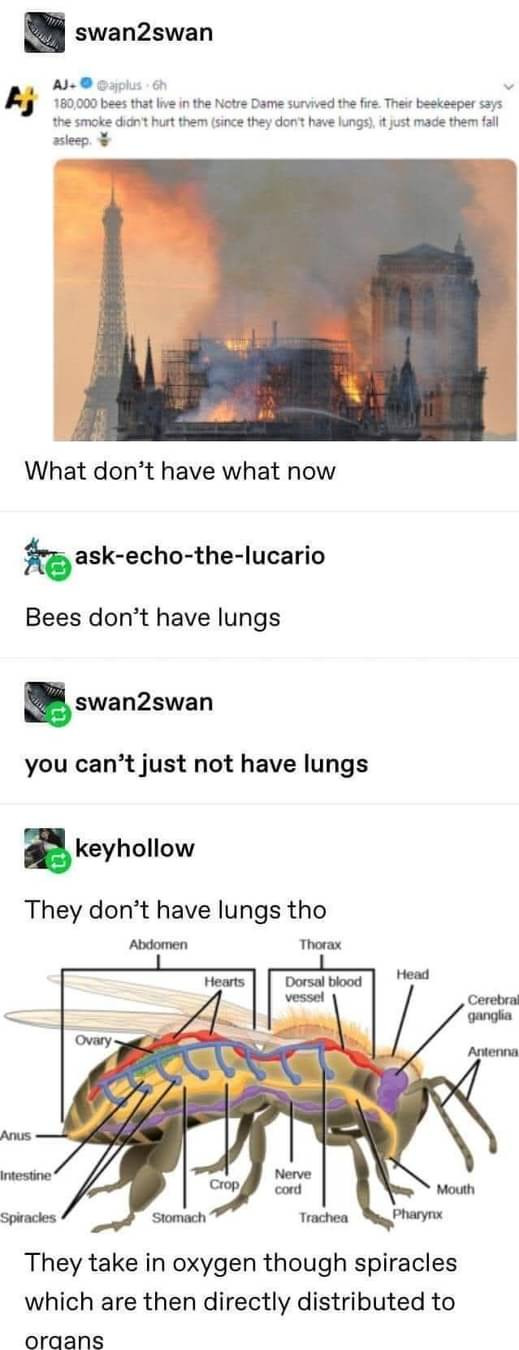"I've been trying to quit smoking. I want to take better care of my spiracles"
Science Memes
Welcome to c/science_memes @ Mander.xyz!
A place for majestic STEMLORD peacocking, as well as memes about the realities of working in a lab.

Rules
- Don't throw mud. Behave like an intellectual and remember the human.
- Keep it rooted (on topic).
- No spam.
- Infographics welcome, get schooled.
This is a science community. We use the Dawkins definition of meme.
Research Committee
Other Mander Communities
Science and Research
Biology and Life Sciences
- [email protected]
- [email protected]
- [email protected]
- [email protected]
- [email protected]
- [email protected]
- [email protected]
- [email protected]
- [email protected]
- [email protected]
- [email protected]
- [email protected]
- [email protected]
- [email protected]
- [email protected]
- [email protected]
- [email protected]
- [email protected]
- [email protected]
- [email protected]
- [email protected]
- [email protected]
- [email protected]
- [email protected]
- !reptiles and [email protected]
Physical Sciences
- [email protected]
- [email protected]
- [email protected]
- [email protected]
- [email protected]
- [email protected]
- [email protected]
- [email protected]
- [email protected]
Humanities and Social Sciences
Practical and Applied Sciences
- !exercise-and [email protected]
- [email protected]
- !self [email protected]
- [email protected]
- [email protected]
- [email protected]
Memes
Miscellaneous
Like most others I have not read the article. But someone please answer me this:
If the bees fell asleep, then why didn't the fire kill them? I can accept that insects don't have lungs, I mean some people are doing well without hearts... but am I supposed to accept that bees are also immune to fire damage?
Put simply smoke doesn't have to be hot. Smoke is just unburnt fuel caused by a process called offgassing (solid turning to a gas).
An example of cooled down smoke is a fire that starts in a well sealed room. It burns through as much fuel as possible, and while the solids are hot they turn into gas, however, due to a lack of oxygen, you don't necessarily see combustion. So then the fire snuffs itself out and what you are left with is a cooling smoke.
So let's say that the fire is on an upper floor. Heat goes up, cold goes down. So as smoke travels through a building it cools, and may eventually sink towards the ground or a lower level (this can be especially possible in a building as large as a cathedral) smoke sinks and interacts with bees at a "manageable temperature".
Tldr: smoke isn't always hot. The bees are happy.
The bees were on a different lower down roof from the main roof (which is the one that burned). The article notes that bee wax melts at 70C and they didn't see any of that under the hives, so they know temperatures stayed below that. So the bees were likely only exposed to some smoke and maybe some slightly elevated temperatures.
Wait until this person hears about fish.
Why doesn't the damaging and hot particulate matter in smoke do any harm to or otherwise clog up their spiracles like it does to the inner lining of lungs? I gather lungs are wet and also very delicate, but if they're directly oxygenating their organs through these spiracles eventually it must get to somewhere wet and delicate for the smoke to get in and potentially harm.
Maybe something like:
- The spiracles stop working and the insect stops most major movements
- When the air becomes better, the new air fills the spiracles and reinvigorates the insect
vs
- Humans need to use their muscles to start breathing, or they will require external assistance
